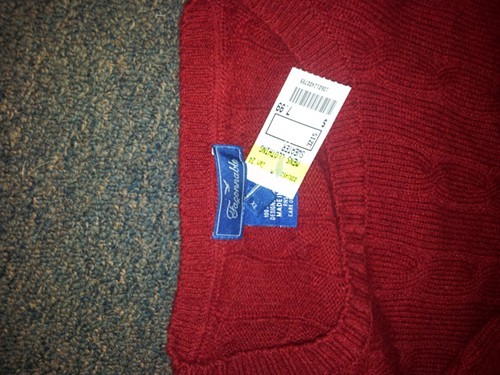Thrifting can be a glorious endeavor, but it’s not a sport for the impulsive. Garages full of useless shit that “might be worth something” have led me to much unhappiness. It’s best to keep purchases to things you can actually use, like clothes and shoes that fit (not clothes you’d like to fit into someday) and things you can and will use tomorrow.
Usually the latter fits into a category of things that have been needed recently but weren’t available, or something that will make an everyday task simpler. This must be something not already in the house. An adorable peeing boy corkscrew is not useful, and will immediately be regarded in the household as useless clutter. Stay away from knick-knacks in general, and remember that electronics are always a crapshoot. Anything in the glass case at the counter is going to be junk, so don’t even bother looking unless you have something already in mind.
Also, don’t buy a project. Big, fancy speakers will probably sound great, but chances are there’s something wrong with them and you probably already have speakers hooked up to a stereo. This violates two rules of thifting already. There’s another very, very important rule that may not apply to everyone, but when it does, it’s the most important. Will the person with whom you share a house be pleased with this purchase? There’s varying degrees of “pleased,” ranging from acceptance (a minor eyeroll) to anger (loud, vulgar and ceaseless questioning). That velvet painting of a topless, soulful woman from the 70s may be your idea of high-art, but your housemate (let’s be real, I’m talking about a spouse or partner, here) will probably have a different opinion.
Clothes, on the other hand, are personal. They’re cheap and will be on display on your body, and if South Park has taught us anything, “It’s MY body and I can do what I want with it.” So If I want to wear orange plaid pants and penny loafers, that’s my business. And If I want to pick out a classy outfit that I may wear just once it will be affordable and memorable. But the other rules of thifting still apply: No projects and it must be usable/wearable immediately.
Clothes can have minor defects, too, so check them over thoroughly. They might be forgivable, like a tiny hole in the cuff of a sweater, or a scratch on a shoe that will likely buff out. Stains are a sin, as are rips, large tears and extreme ill-fitting. Remember, this stuff is cheap and often discounted after the sticker price. It’s OK to make it back and donate it one you find out it won’t work or if you just don’t like it. This is a much better solution than comply keeping a closet full of clothes that just didn’t make the cut. Be honest with yourself and don’t be afraid to re-donate. For constant thifters, it might be a good idea to keep a bag of clothes in the car ready to drop off.
The idea of buying something second-hand makes me feel like I’m helping the planet. That sweater didn’t need any more energy put into it’s creation, and that money went to charity while I still look like a million bucks (or at least $200). It’s best not to get political, here. There are thrift stores that donate to charities which might not be fully aligned with one’s internal beliefs. Salvation Army, for instance, has donated large sums of money to political campaigns against gay rights. But remember, it’s not really about helping the cause, it’s about buying cheap stuff.














